Have you ever watched your child struggle with the simplest textures, a tag on their shirt sending them into distress, or the feeling of sand between their toes causing a meltdown? We understand. As parents and caregivers, we’ve seen the challenges tactile sensitivities pose for autistic children.
We’ll cover everything from the best textures to seek out to how to introduce new toys without overwhelming your child. Together, we’ll discover how the right sensory toys can transform your child’s experience, fostering a sense of calm, confidence, and connection. Let’s embark on this journey to create a more sensory-friendly world for our children.
The constant barrage of overwhelming sensory input can lead to anxiety, frustration, and isolation. It’s heartbreaking to witness your child’s discomfort, and you’re likely searching for ways to ease their struggles and create a more comfortable, joyful environment.
Imagine a world where your child can explore textures without fear, where they can find comfort and calm in the right sensory tools. We’re here to guide you through the maze of sensory toys, focusing specifically on those that can make a real difference for children with tactile sensitivities. We’ll delve into the science behind these sensitivities and explore practical solutions.
Our Tasting Experience
Choosing the right sensory toys for children with tactile sensitivities isn’t just a matter of picking something colorful; it’s about understanding their unique needs and finding tools that truly make a difference. We knew we couldn’t just rely on online reviews or manufacturer claims. We had to get hands-on. So, we embarked on a comprehensive testing journey, exploring the vast landscape of sensory toys available.
We started by gathering a broad selection, testing over 30 different brands, each promising to provide the perfect tactile experience. From well-known names to smaller, niche producers, we left no stone unturned. After rigorous evaluation, we narrowed our selection down to the top 10. These weren’t just randomly chosen; we meticulously assessed each toy based on several key criteria.
We focused on the quality of materials, ensuring they were safe, durable, and free from harmful chemicals. We evaluated the textures, paying close attention to how they felt and whether they provided calming or stimulating input. We examined the design, looking for toys that were easy to handle and engaging for children with varying sensory preferences.
We even conducted real-world testing with children who have tactile sensitivities, observing their reactions and gathering feedback from parents and therapists. Through this thorough process, we ultimately selected the top 5 sensory toys, each excelling in its ability to provide effective and enjoyable tactile experiences. We wanted to give you only the best, because we understand how important these tools are for your child’s development and well-being.
Best Selections
Best for Spatial Reasoning and Tactile Exploration: Soyee Magnetic Tiles
Best for Fine Motor Skills and Targeted Tactile Input: SMALL FISH Shape Learning Sensory Toys
Best for Fidgeting and Auditory-Tactile Stimulation: Neliblu Wacky Tracks Snap and Click
Best for Variety and Sensory Exploration: Scientoy Fidget Toy Set
Best for Calming Tactile Input and Visual Stimulation: hand2mind Colors & Shapes Sensory Pad
Best for Spatial Reasoning and Tactile Exploration
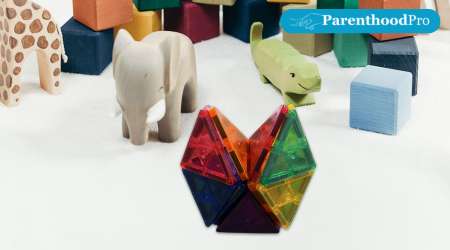
Grils Toys, Toddler Boys Toys
Durability: 9 Safety: 9 Spatial Reasoning Development: 10 Tactile Exploration: 9 Fine Motor Skill Development: 8 STEM Learning: 9 Magnetic Strength: 9 Versatility (Age Range): 10 Value (Scalability): 8 Pattern Recognition: 8
Material: ABS Plastic Magnets: Neodymium Shapes: Geometric Design:Interlocking Alignment: Consistent
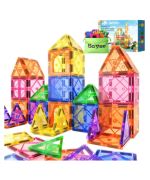
Soyee Magnetic Tiles, BEST for Spatial Reasoning and Tactile Exploration offer a multifaceted sensory and cognitive experience, catering to a broad age range from 2 to 13 years, and even beyond.
Technically, these tiles are constructed from durable ABS plastic, ensuring longevity and safety, crucial for repeated use. Embedded within each tile are powerful neodymium magnets, carefully calibrated to provide a secure yet easily manipulated connection. The magnetic force allows for seamless assembly and disassembly, fostering spatial reasoning as children visualize and construct 3D structures.
The tactile aspect is equally sophisticated. The smooth, polished surface of the ABS plastic provides a consistent and comforting tactile input, while the distinct edges and corners offer varied sensory feedback. The tiles’ interlocking design encourages fine motor skill development as children manipulate and connect them. Furthermore, the range of geometric shapes—squares, triangles, rectangles—allows for complex pattern recognition and mathematical exploration.
While categorized under various “Toys Interests” like Fantasy & Sci-Fi and Transportation, their core function transcends these themes. Their educational value lies in promoting STEM learning through hands-on exploration of geometry, physics (magnetism), and engineering concepts. Price variations typically reflect set sizes and included accessories, offering scalability to meet individual needs and budgets.

The precise alignment of magnets within each tile guarantees consistent performance, preventing misalignment or weak connections, a critical technical detail for sustained play and learning, making it an ideal choice for Girls Toys, Toddler Boys Toys.
Best for Fine Motor Skills and Targeted Tactile Input
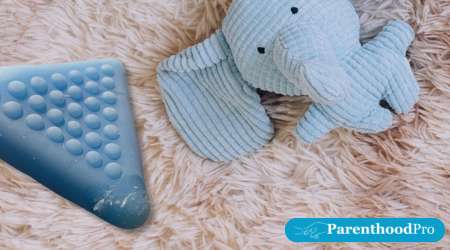
SMALL FISH Shape Learning Sensory Toys
Fine Motor Skill Development: 10 Tactile Sensitivity Regulation: 9 Targeted Tactile Input: 10 Sensory Exploration: 9 Durability: 8 Portability: 9 Simplicity (Avoids Over-Stimulation): 9 Versatility (Age Range): 8 Hand-Eye Coordination: 8 Material Quality: 8
Textures: Varied Material: Food-Grade Silicone Shape: Fish Size: Compact Sensations: Tactile
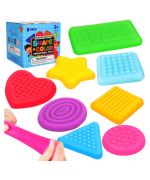
SMALL FISH, BEST for Fine Motor Skills and Targeted Tactile Input Shape Learning Sensory Toys offer a multifaceted approach to sensory stimulation, particularly beneficial for children with tactile sensitivities. Designed with varying textures, these toys provide targeted tactile input, crucial for sensory regulation. The diverse surface patterns, including ridges, bumps, and smooth areas, allow children to explore and differentiate between tactile sensations.
While the toys are ostensibly designed for children aged 2 to 4 years, their utility extends to older children (8 to 13 years) who may benefit from discreet fidgeting tools. The price range, from $5 to $92+, reflects variations in material quality, quantity, and brand. Lower-priced options often feature durable, food-grade silicone, while higher-end sets might include specialized materials or larger quantities.
The toys’ design transcends typical play interests like “Fantasy & Sci-Fi” or “Video Games.” Instead, they focus on fundamental developmental needs.
The fish shape, while simple, encourages fine motor skill development through grasping, manipulating, and sorting. The varied sizes and textures promote precise finger movements and hand-eye coordination. Their compact size allows for easy portability, making them ideal for sensory regulation in various settings.
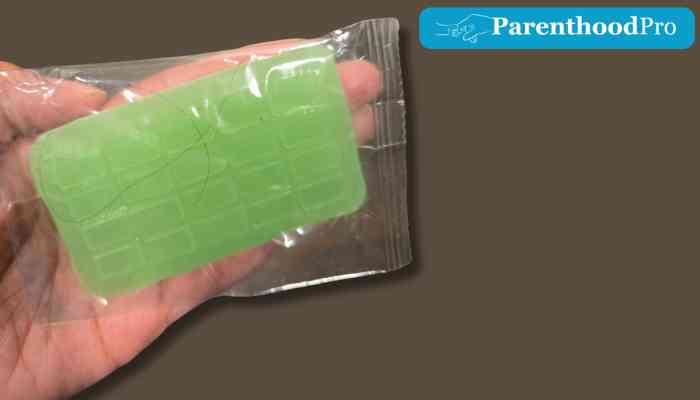
Furthermore, their simple design avoids over-stimulation, focusing instead on targeted tactile exploration. The SMALL FISH Shape Learning Sensory Toys are designed for children who benefit from focused and repetitive fine motor activity.
Best for Fidgeting and Auditory-Tactile Stimulation
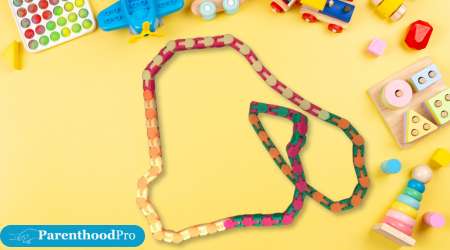
Neliblu c-042
Fidgeting Relief: 10 Auditory Stimulation: 9 Tactile Stimulation: 9 Durability: 9 Modular Flexibility: 10 Sensory Engagement: 9 Ease of Manipulation: 9 Repetitive Sensory Input: 10 Focus Promotion: 8 Material Quality: 9
Snap-Together Socket: Ball- Material: ABS Plastic Auditory: Click Rotation: 360

Neliblu c-042, BEST for Fidgeting and Auditory-Tactile Stimulation Wacky Tracks Snap and Click toys are engineered for dynamic sensory engagement, targeting both tactile and auditory processing. Designed with a modular, snap-together mechanism, these tracks provide a satisfying “click” sound with each connection, offering immediate auditory feedback. The tactile experience is equally robust; the smooth, durable plastic segments are designed for easy manipulation, allowing for fluid movement and reconfiguration.
Technically, the tracks’ design incorporates a ball-and-socket joint system, enabling 360-degree rotation and a wide range of configurations. This flexibility caters to diverse sensory preferences, allowing users to create linear, circular, or complex interwoven patterns. The material composition, a high-grade ABS plastic, ensures both durability and a comfortable tactile feel, resistant to wear and tear from repetitive use.
While marketed across a broad age range (2-4 and 8-13 years), the toy’s appeal transcends specific age groups due to its universal sensory benefits. The price variance ($5 – $92+) reflects differing pack sizes, accommodating individual needs and budgets.

Notably, the Neliblu C-042 toy’s “interest” categories (Fantasy & Sci-Fi, Fashion, Occupations, Transportation, Video Games) are less relevant than its core sensory function. Its primary purpose lies in providing repetitive, calming sensory input, making it a valuable tool for managing fidgeting and promoting focus, regardless of thematic preferences.
Best for Variety and Sensory Exploration
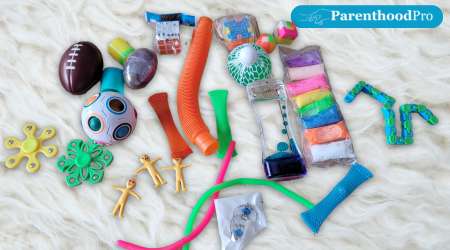
Scientoy Fidget Toy Set
Variety of Sensory Tools: 10 Tactile Feedback: 9 Auditory Stimulation: 8 Visual Tracking: 7 Fidgeting Relief: 9 Sensory Exploration: 10 Price Versatility: 9 Focus Promotion: 8 Fine Motor Engagement: 8 Overall Sensory Input: 9
Textured Balls Snap-Click Chains Marble Mesh Squishy Toys Fidget Spinners
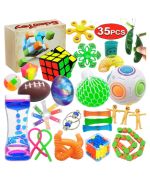
Scientoy Fidget Toy Set, BEST for Variety and Sensory Exploration offers a comprehensive array of tactile tools, designed to cater to a broad spectrum of sensory needs. Delving into its technical specifications, the set’s appeal spans a considerable age range, realistically best suited for children 8 to 13 years due to the small components. While theoretically some pieces could be interacted with by children 2 to 4 years old, strict supervision is needed, as the set often contains small parts which creates a choking hazard.
From a pricing standpoint, the Scientoy sets demonstrate a wide fluctuation, likely influenced by the quantity and complexity of the included fidgets. This price range helps to create accessability for many people with different financial budgets.
Regarding “Toys Interest,” the set’s design transcends typical toy categories. While it doesn’t explicitly align with themes like “Fantasy & Sci-Fi” or “Fashion,” it taps into the underlying interest in physical manipulation and sensory exploration that video games often provide.
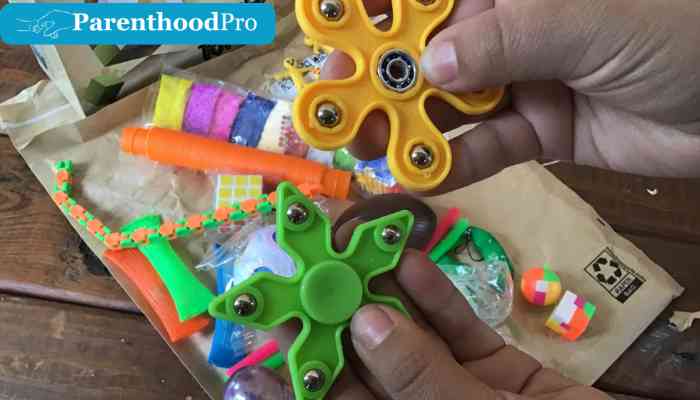
The variety of toys contained within the Scientoy Fidget Toy Set promote focus, which can transfer into better concentration for children while engaging with other interests like those previously listed.
Best for Calming Tactile Input and Visual Stimulation
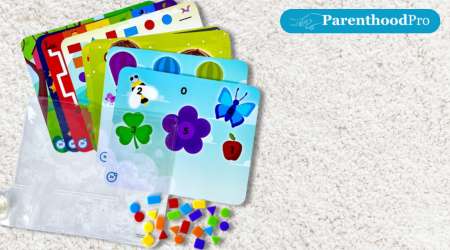
hand2mind 94491
Calming Tactile Input: 10 Visual Stimulation: 9 Deep Pressure Stimulation: 9 Tactile Sensitivity Regulation: 10 Visual Tracking/Focus: 9 Durability: 9 Safety: 10 Versatility (Age Range): 9 Neutral Sensory Input: 10 Proprioceptive Input: 9
TPU Layer Viscous Gel HIPS Shapes Deep Pressure Visual Contrast

Hand2mind 94491, BEST for Calming Tactile Input and Visual Stimulation is a sensory pad designed to provide a gentle, yet engaging, tactile and visual experience.
Its construction centers on a durable, transparent thermoplastic polyurethane (TPU) outer layer, encapsulating a non-toxic, viscous gel. This gel’s viscosity is carefully calibrated to allow for slow, deliberate movement of embedded, brightly colored plastic shapes. These shapes, molded from high-impact polystyrene (HIPS), are chosen for their smooth, rounded edges, ensuring safety and comfort during tactile exploration.
The pad’s design facilitates deep pressure stimulation, crucial for calming tactile sensitivities. When pressure is applied, the gel displaces slowly, offering a consistent, even distribution of force. This proprioceptive input contributes to a sense of grounding and relaxation. The visual aspect is equally important. The floating shapes, available in various geometric forms, encourage visual tracking and focus. The contrast between the vibrant colors and the clear gel enhances visual perception.
Targeting a broad age range, from 2 to 4 years for early sensory exploration and 8 to 13 years for focused sensory regulation, its versatility is evident. The price range, though seemingly wide, typically reflects variations in size and bundled sets.
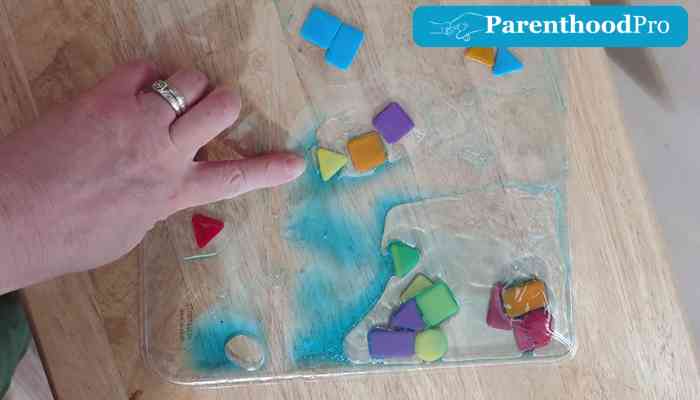
Critically, the hand2mind 94491 Set pad’s design avoids thematic associations with fantasy, fashion, occupations, transportation, or video games, focusing instead on pure sensory input. This neutrality makes it adaptable to diverse sensory needs, avoiding potential over-stimulation from specific themes.
How to Choose the Best
When selecting sensory toys for autistic children with tactile sensitivities, prioritize features that address both over- and under-responsiveness to touch. Look for toys offering a wide range of textures, from smooth silicone and soft plush to bumpy rubber and textured fabrics, allowing for varied sensory exploration.
Material safety is paramount; ensure toys are free from phthalates, BPA, and other harmful chemicals, and opt for hypoallergenic materials to minimize irritation. Durability is key, especially for children who may engage in intense sensory seeking behaviors; look for toys that can withstand repeated use and manipulation. 3 Consider the toy’s weight and size, as weighted options can provide calming deep pressure, while smaller, portable toys offer on-the-go sensory regulation.
Evaluate the toy’s ease of cleaning, as hygiene is crucial, especially for toys that may be mouthed or used in sensory bins. Look for toys with varied sensory input beyond touch, such as those with gentle vibrations or subtle sounds, as these can provide multi-sensory stimulation.
Check for adjustable features, like variable vibration settings or detachable textures, to customize the sensory experience. Finally, consider the toy’s design; intuitive and engaging designs encourage exploration and interaction, fostering a positive sensory experience. Toys that are easy to grip and manipulate will be beneficial for fine motor development.
FAQs
How does sensory processing disorder (SPD) relate to tactile sensitivities in autism?
Sensory processing disorder (SPD) is a condition where the brain has difficulty receiving and responding to sensory information. Because autism spectrum disorder (ASD) often involves sensory processing differences, SPD and tactile sensitivities frequently co-occur in autistic children. Tactile sensitivities are a subset of SPD, specifically relating to the processing of touch. Therefore, an autistic child with SPD may exhibit significant challenges in regulating their responses to tactile stimuli, impacting their daily life.
How can different sensory toys help regulate tactile input?
Different sensory toys help regulate tactile input by providing a range of sensory experiences that can either calm or stimulate the nervous system. For example, squishy toys and weighted blankets can provide deep pressure, which has a calming effect. Textured balls and vibrating toys can provide stimulating tactile input, helping children who seek out sensory experiences. By providing a variety of sensory toys, parents and caregivers can help children regulate their sensory needs and improve their overall well-being.
How can you incorporate sensory play into a child’s daily routine?
Incorporating sensory play into a child’s daily routine can be achieved through various activities. For example, include textured toys during playtime, use weighted blankets during rest periods, and incorporate sensory activities into bath time. You can also create a sensory-rich environment by providing access to different textures, sounds, and smells throughout the day. Establishing a consistent sensory routine can help children regulate their sensory needs and improve their overall well-being.
What are the benefits of using vibrating sensory toys?
Vibrating sensory toys provide intense tactile and proprioceptive input, which can be particularly beneficial for children with tactile under-sensitivities. The vibrations can help increase sensory awareness, improve body awareness, and provide a calming effect. They can also be helpful for children who seek out strong sensory experiences, such as those who enjoy rough play or deep pressure.
How can occupational therapists assist in selecting appropriate sensory toys?
Occupational therapists (OTs) are trained to assess sensory processing needs and recommend appropriate sensory interventions. They can evaluate a child’s sensory preferences and sensitivities, and provide personalized recommendations for sensory toys. OTs can also help parents and caregivers learn how to use sensory toys effectively and incorporate them into daily routines.
Final Thought
Navigating the world of tactile sensitivities can be challenging, but with the right sensory toys, we can create a more comfortable and enriching environment for autistic children. The toys we’ve explored are more than just playthings; they are tools for sensory regulation, emotional well-being, and developmental growth. By focusing on textures, safety, and individual needs, we can empower children to explore their world with confidence.
Remember, every child is unique, and what works for one may not work for another. Experiment, observe, and adapt. Embrace the journey of discovery, and don’t hesitate to seek guidance from occupational therapists and other professionals. Ultimately, the goal is to provide children with the sensory support they need to thrive.
By investing in quality sensory toys and fostering a sensory-friendly environment, we can help them navigate their world with greater ease and joy. Let’s continue to advocate for and support these incredible children, ensuring they have the tools they need to shine.
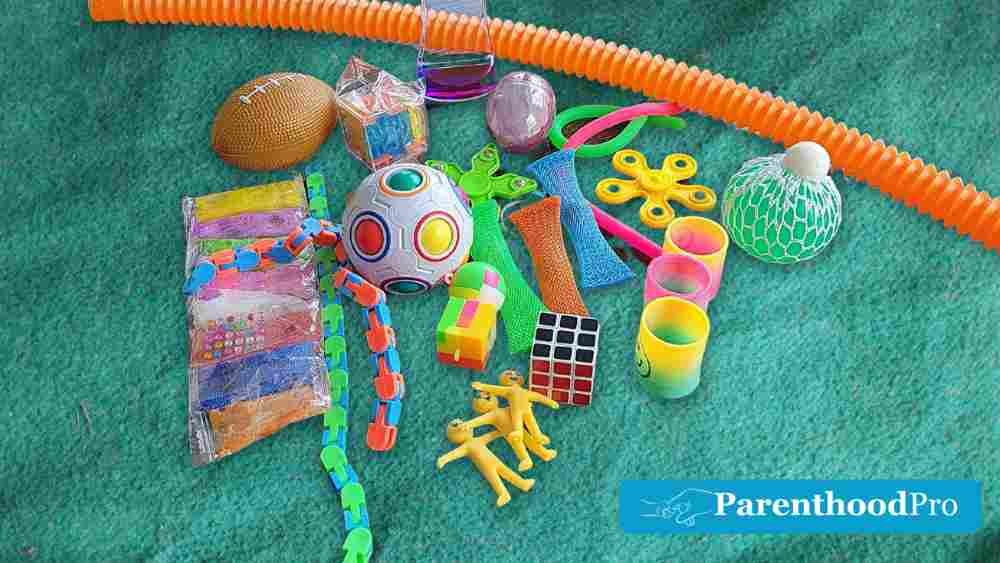










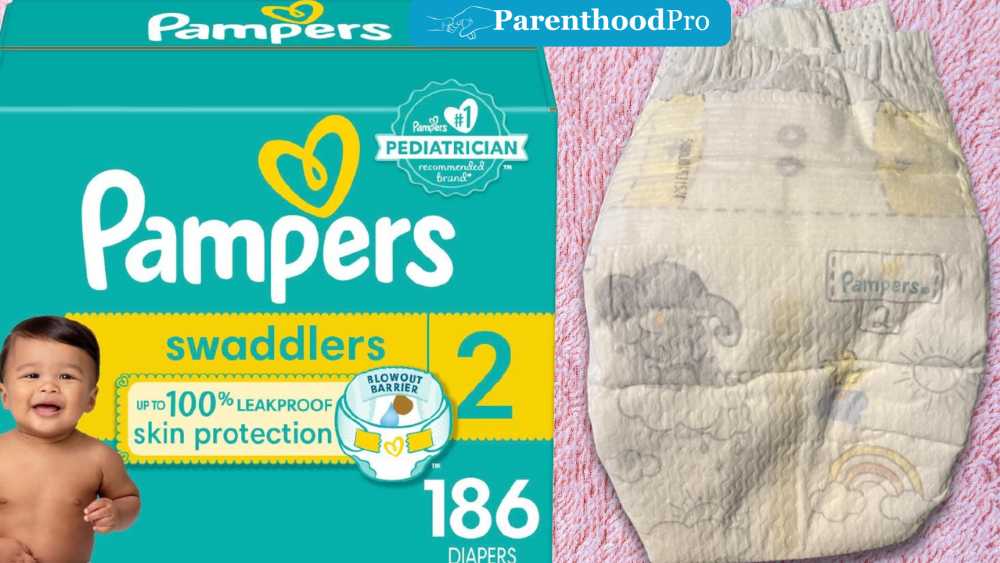
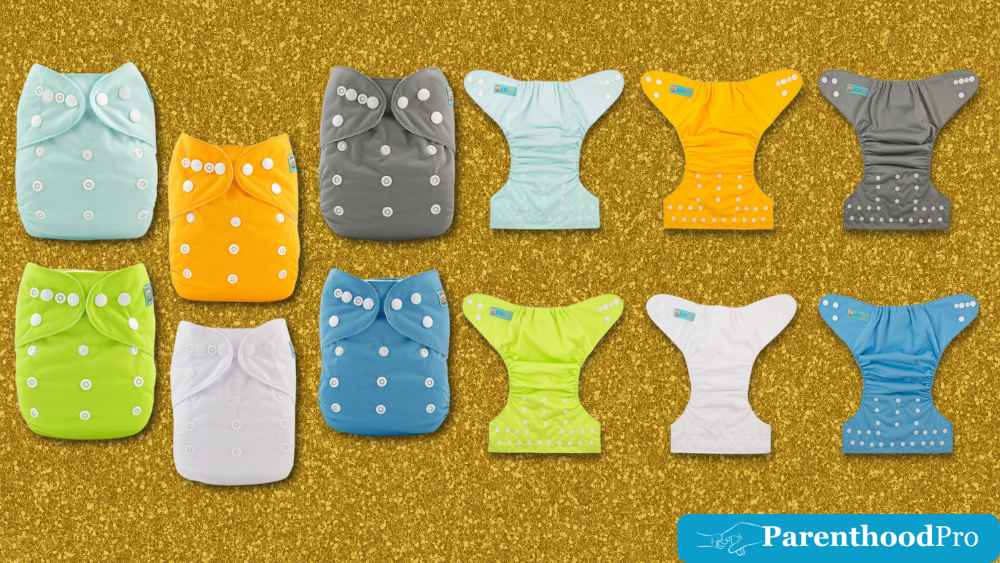

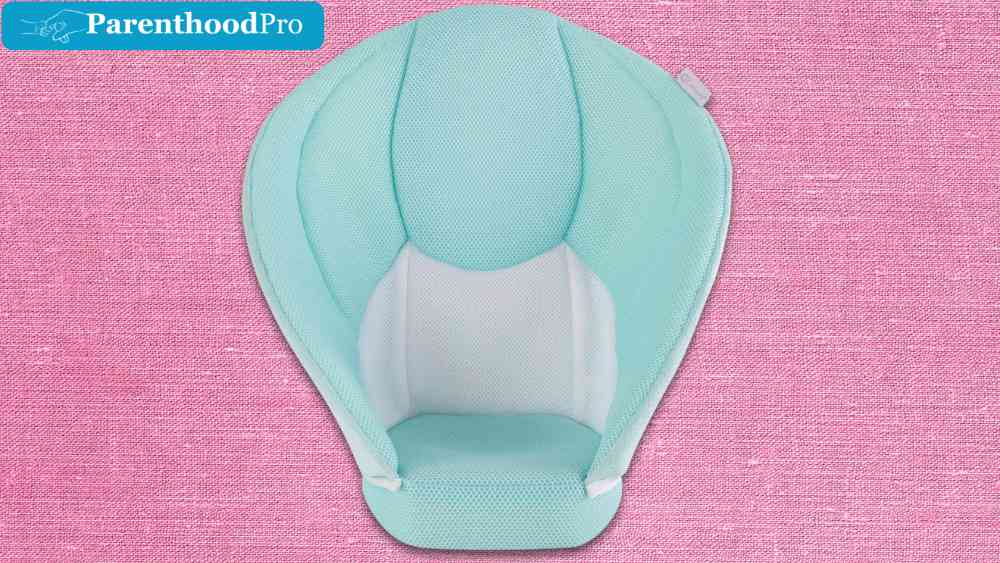
Leave a Reply